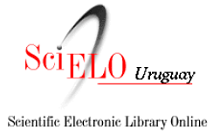Characterization of the ruminal bacterial microbiota of a grazing bovine through classical and cultivation-independent techniques
Keywords:
Ruminal bacterial community, FISH, Grazing animalsAbstract
Ruminal microbiota has conferred ruminants the ability to utilize cellulose present in vegetal material. Fiber breakdown provides energy sources to ruminants and the microbial biomass represents the main protein source for grazing animal. Rumen bacterial community is composed by hundreds of species and is distributed in the particulate solid phase, in ruminal fluid and to a lesser extent associated to the nuninal epithelium. Only a small portion of the mainly-anaerobic ruminal microbiota can normally be cultured. Molecular methods have shed light in the study of microbial diversity without cultivation. The objectives of this work were to characterize the cultivable and non-cultivable ruminal bacterial community associated with solid and fluid rumen content fractions of a grazing bovine and to isolate and identify bacteria that are able to grow onto a culture media with pure cellulose as the main energy and carbon sources. Sixteen isolates were identified including members of Butyrivibrio, Pseudobutyrivi- facbrio, Succinivibrio and Selenemonas genera. Four bacterial isolates were representatives of new genera and species. As far as we are concerned, this is the first local approach focused on the identification and characterization of ruminal native microorganisms using classic bacteriology and molecular techniques.











